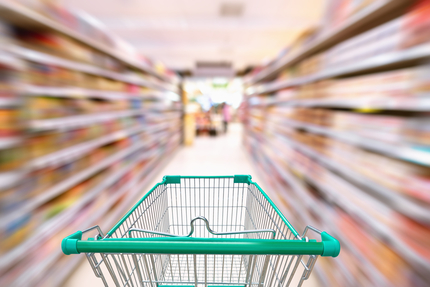There is no doubt that in an inflationary environment—such as the one in which we find ourselves now—consumer spending habits are affected. As prices continue to rise, people will stop to consider the things they really need versus the things they would like to have.
For example, when it comes to food, people simply must have it. Still, this doesn’t mean consumers will continue with the same food shopping habits they had when prices were low and stable.
Investors will also find that their spending habits need to change. Instead of pursuing growth stocks at any price, investors need to look to stocks that can offer at least a partial hedge against inflation.

Grocery Store Stocks
One such safe harbor against an inflationary storm you may want to consider is the grocery store sector.
Regardless of what happens in the economy, food is a necessity. That allows grocers to pass along their higher costs from inflation to the consumer. For instance, if you go to the grocery store and the cost of milk is 10% higher, you may buy less of it at a time, but you still need milk so you will buy it.
With inflation still hovering near 40-year highs, consumers are cutting back on discretionary spending to focus on essentials. Many are eating out less and cooking more at home. This is helping to boost grocery store sales. Plus, shoppers are changing what they buy. Rising prices have encouraged consumers to switch to the stores’ cheaper private label brands.
Another reason grocery stocks tend to perform better than the overall market when inflation rises is that most grocery stocks pay a decent dividend to investors.
My favorite company in the sector is Kroger (KR). Here’s why…
Kroger Thriving
The company is the largest standalone grocer in the U.S. It operated about 2,700 retail supermarkets and multi-department stores in 35 states at the end of its 2022 fiscal year.
Kroger’s latest earnings results, which were reported on September 9, 2022, were outstanding. Total company sales were $34.6 billion in the second quarter, compared to $31.7 billion for the same period last year. Excluding fuel, sales increased 5.2% compared to the same period last year. Gross margin was 20.9% of sales for the second quarter. Kroger’s 3.2% quarterly adjusted operating margin rose 22 basis points despite rising labor and product costs.
Management also lifted full-year guidance for the second time in six months. The company now expects $3.95–$4.05 in adjusted diluted EPS ($0.10 higher), with identical sales without fuel to be in the range of 4.0% to 4.5%.
Consumers are switching to the company’s cheaper private label brands. Like-for-like sales of owned store brands rose 10.2% in the second quarter compared with the aforementioned total growth of 5.2%. Despite being sold at a lower price point, private label products tend to yield fatter margins. This was reflected in the 14% jump in Kroger’s operating profit for the quarter.
Kroger continues to generate strong free cash flow and is maintaining its current investment grade debt rating while returning excess free cash flow to shareholders via share repurchases and a growing dividend over time. The company’s net total debt to adjusted EBITDA ratio is 1.63, compared to 1.78 a year ago.
Kroger’s Outlook
I remain very optimistic on Kroger’s outlook going forward. Here is what Morningstar said:
We are encouraged that management indicates Kroger’s pricing relative to competitors is on solid footing, and the company’s increasing reliance on personalized promotions should improve efficiency in its customer acquisition and retention efforts. Kroger has also done well to use its omnichannel flexibility to engage customers across channels, with 8% digital expansion in the quarter. The company’s efforts to extend its digital reach into new markets (spearheaded by its fulfillment centers operated with the U.K.’s Ocado) have met with success according to customer surveys. We continue to believe such work will allow Kroger to realize profitable growth without having to build a store presence in new markets, with the rollout of its Boost program (bundling delivery and additional fuel rewards for $59-$99 per year), building loyalty while contributing to its data analytics strength.
None of this has been lost on investors.
Kroger shares are up around 12% this year, compared to a decline of about 15% for the wider S&P 500. The grocer’s market value has swelled to $36.2 billion.
Yet Kroger is currently trading at a mere 12 times forward earnings. Compare that to big box store competitors, Walmart and Costco, with much racier multiples of 22 times and 38 times respectively.
Turning to the dividend, the stock’s 2.06% dividend yield is higher than Walmart’s and more than double Costco’s!
Earlier this quarter, Kroger increased its dividend by 24%, marking the 16th consecutive year of dividend increases. It pays around 25% of earnings on average as dividends.
Additionally, during the quarter, Kroger repurchased $309 million in shares; year-to-date, it has repurchased $975 million in shares. In fact, the company has repurchased more than $6.5 billion worth of shares over the past five years. And on September 9, the Board of Directors authorized a new $1 billion share repurchase program.
Of course, competition is fierce when it comes to selling food and household essentials. There is Walmart, Target, and Costco—not to mention all of the dollar stores.
But Kroger is showing it can hold its own. High inflation is not going away for a while. This should mean more upside for Kroger stock and a higher dividend payout. The stock is a buy anywhere in the range of $50 to $53 per share.





